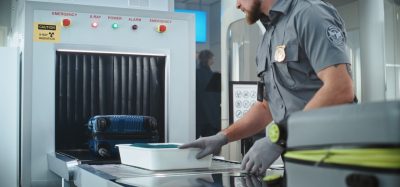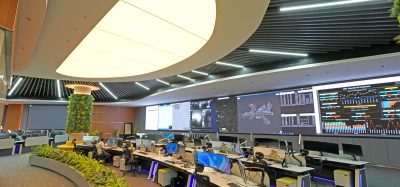IATA and ACI present the NEXTT steps for the future of airports
Posted: 6 September 2018 | International Airport Review | 1 comment
The NEXTT initiative creates a vision for the future of air transport; increasing efficiency and improving customer experience through the use of new and emerging technologies and innovative processes.


IATA and ACI World are delighted to partner with International Airport Review to engage everyone in their vision, promoting transformations that all stakeholders across the industry can work together to achieve.
The “Need for Change” has developed from the exponential increase in passenger traffic since 2015. By 2035 an 89 per cent increase is predicted bringing 7.2 billion people through our skies annually, compared to the 3.8 billion that use air travel today.
Given the cost and complexity of infrastructure change, airports, airlines and other stakeholders need to consider how to make the best use of technology advancements and advanced processes as a new way to provide capacity. In fact, in many locations this is not possible as either building infrastructure simply can’t be built fast enough or the constraints of current airport locations prevent expansion.
Meeting this challenge requires a coordinated industry effort, to determine how the travel experience may change in the future and how technology and process innovation will help to meet customer needs. In today’s world, even with new initiatives, many systems and processes used remain siloed and fragmented. NEXTT provides the interlinks between key initiatives creating one vision for the shape of tomorrow. The vision therefore seeks to integrate all aspects that impact on-ground and airport operations including the passenger journey, baggage processing, aircraft turnaround and cargo processes.
The NEXTT vision seeks to determine what could be implemented over the next 20 years that provides the change needed. With this in mind, IATA and ACI world have identified emerging themes in the industry that can be applied to the passenger, baggage and cargo journey; these are off-airport activities, advanced processing and interactive decision making.
Off-Airport Activities
These are areas processes of the airport that can be outsourced moved to occur in places other than at airport terminals and buildings. This might include processes that can take place at home, within a local city, as part of the whole transportation network or at an off-site dedicated location. Processes may also be eliminated where they are duplicative or completed virtually rather than physically. For example, passengers would be able to collect their baggage from where they choose, and have it delivered to their destination, enabling flexibility and convenience.
Advanced Processing
Advanced processing within the NEXTT context embraces the increasing use of digital identity management, digital transformation, automation and robotics. As with all of the themes, advanced technology brings great potential to increase operational efficiency, reduce queues and processing times and create an attractive experience for passengers and staff. Moreover, the use of automation will allow for faster, safer, environmentally conscious and convenient airside ground services. Airports and airlines are already starting to deploy technologies such as autonomous vehicles, terminal robots, digital identity management solutions and automated processing, but most projects remain in the early stages of development. The NEXTT vision looks at developing and embracing new and emerging technologies to identify possibilities and opportunities brought by advanced processing.
Interactive Decision Making
Data sharing and communication is the key to optimizing operations and breaking down silos between processes and stakeholders. There are many disparate data sources in an airport; bringing these together can enable predictive decision making and real time tracking allowing airports to become more efficient in the moment.
Predictive decision making facilitates airport management; delays can be more easily managed and easier to avoid. Moreover, airports will more easily be able to adapt to passengers needs as they design their trip specifically for them. Baggage and cargo would also be tracked from end-to-end, ensuring greater peace of mind to the customer. But the application of data and artificial intelligence has even greater potential – for improvements in security, safety, facilitation and environment. The NEXTT vision will explore how the power of data can be harnessed.
To explain in more depth the vision of the future of airports, International Airport Review will be hosting three webinars for the NEXTT vision.
Webinar one: Off-Airport Activities – 20th September 2018
To register click here:
Webinar two: Advanced Processing Technology – 1st November 2018
Check back soon to register.
Webinar three: Interactive Decision Making – 6th December 2018
Check back soon to register.
Join the conversation on Linkedin, click here or Twitter #NEXTTJourney.
Stay Connected with International Airport Review — Subscribe for Free!
Get exclusive access to the latest airport and aviation industry insights from International Airport Review — tailored to your interests.
✅ Expert-Led Webinars – Gain insights from global aviation leaders
✅ Weekly News & Reports – Airport innovation, thought leadership, and industry trends
✅ Exclusive Industry Insights – Discover cutting-edge technologies shaping the future of air travel
✅ International Airport Summit – Join our flagship event to network with industry leaders and explore the latest advancements
Choose the updates that matter most to you.
Sign up now to stay informed, inspired, and connected — all for free!
Thank you for being part of our aviation community. Let’s keep shaping the future of airports together!
Related topics
Air freight and cargo, Airport construction and design, Airport development, Baggage handling, Biometrics, Capacity, Ground handling, New technologies, Passenger experience and seamless travel, Passenger volumes, Safety, Security, Self-service, Terminal operations
Related organisations
International Air Transport Association (IATA), NEXTT Vision (IATA & ACI)



















Off-airport activities are essential in order to reduce airport traffic.
Airports could have more parking space and runway.